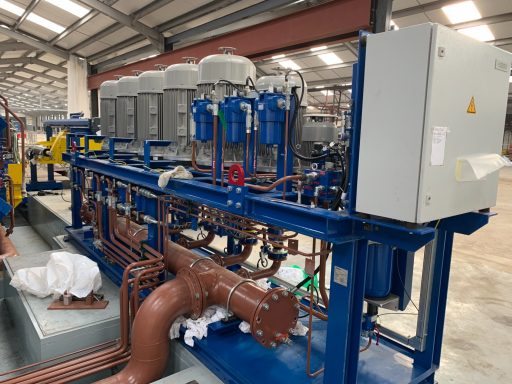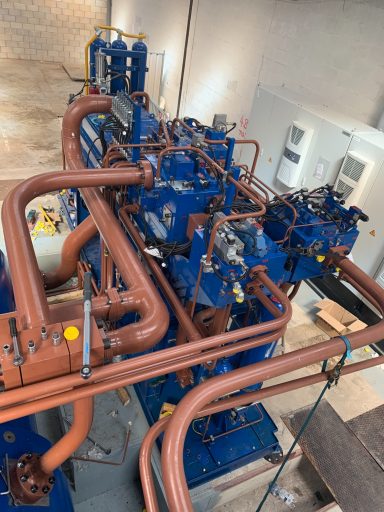MNE Hydraulic Installation
Hydraulic installation involves the physical assembly and setup of hydraulic systems, components, and equipment to ensure they function correctly and efficiently. Proper installation is critical for the safe and reliable operation of hydraulic systems. Here are the steps and considerations for a typical hydraulic installation:
1. Preparation and Planning:
- Review the hydraulic system design and layout to ensure all components are in the correct position.
- Gather all necessary tools, equipment, and materials required for the installation.
- Ensure that personnel involved in the installation have the necessary training and safety knowledge.
2. Safety Precautions:
- Prioritize safety throughout the installation process. Identify potential hazards and implement safety measures.
- Use appropriate personal protective equipment (PPE) such as gloves, safety glasses, and hearing protection.
3. Site Preparation:
- Clear the installation area of any debris, obstructions, or potential hazards.
- Ensure the workspace is well-lit and adequately ventilated.
- Prepare a clean, level surface for the installation of hydraulic components and equipment.
4. Component Installation:
- Install hydraulic components such as pumps, valves, cylinders, hoses, and fittings according to the system layout and design.
- Follow manufacturer guidelines and torque specifications for fastening components to prevent leaks and ensure proper functioning.
5. Fluid Management:
- Fill the hydraulic reservoir with the appropriate hydraulic fluid, following the manufacturer's recommendations.
- Bleed air from the system to prevent cavitation and ensure proper fluid flow.
- Monitor fluid levels and quality regularly during installation.
6. Tubing and Hose Assembly:
- Assemble hydraulic tubing or hoses, making sure they are correctly routed and secured to avoid chafing or kinking.
- Properly torque fittings to prevent leaks.
7. Electrical and Control Connections:
- If the hydraulic system involves electrical or electronic controls, connect and configure them according to the control system design.
- Verify electrical connections to ensure they are secure and correctly wired.
8. Pressure Testing:
- Conduct pressure testing to check for leaks and verify the integrity of the hydraulic system.
- Gradually increase pressure while monitoring for leaks or abnormal behavior.
- Ensure that pressure relief valves are properly set to prevent over-pressurization.
9. Functional Testing:
- After successful pressure testing, perform functional tests to ensure all hydraulic components operate as intended.
- Verify that control systems are working correctly, and the system responds to commands as expected.
10. Documentation: - Maintain detailed records of the installation process, including pressure test results, component serial numbers, and any deviations from the original design.
11. Commissioning: - Once the installation is complete and all tests have been successfully conducted, commission the hydraulic system for regular operation.
12. Training: - Provide training to personnel who will operate and maintain the hydraulic system to ensure safe and efficient usage.
13. Maintenance and Monitoring: - Establish a routine maintenance schedule to inspect, service, and replace hydraulic components as needed. - Implement monitoring systems to track system performance and detect issues early.
Proper hydraulic installation is critical for system reliability, efficiency, and safety. It is essential to follow manufacturer guidelines, industry standards, and best practices throughout the installation process to ensure the long-term success of your hydraulic system.
Gallery
Examples of our installation works completed
LARGE PRESS WORKS
SITE WORK
PIPE MANIPULATION
TURN KEY
MOBILE WORKSHOPS
UK WIDE + EUROPE
©Copyright. All rights reserved.
We need your consent to load the translations
We use a third-party service to translate the website content that may collect data about your activity. Please review the details in the privacy policy and accept the service to view the translations.




